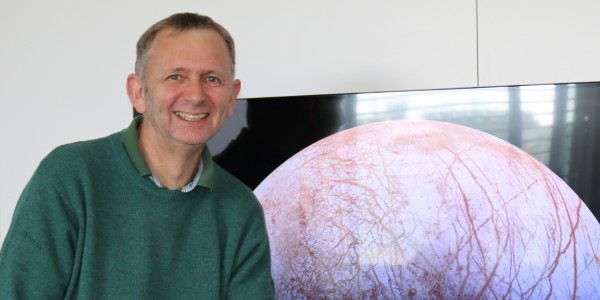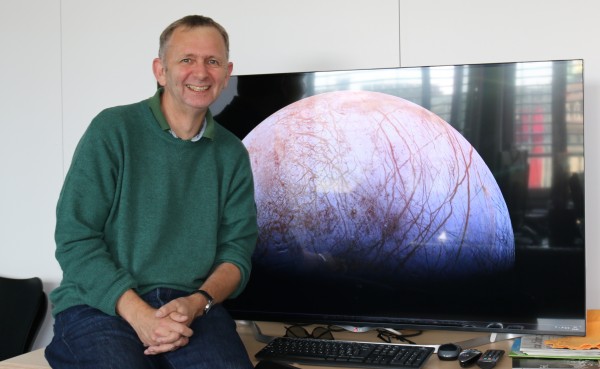To the Jovian moon Europa in 2025

Our Solar System has hundreds of thousands of objects from planets down to small asteroids. And, of course, they all have a story to tell about their formation and evolution. However, only a few of these objects show remarkable phenomena that in turn can capture the imagination of both scientists AND the general public. Mars, the Saturnian moon, Enceladus, and the volcanically active moon of Jupiter, Io, are three examples.
The Jovian moon, Europa, also stands out as one of the objects planetary scientists have to study and comprehend. For this reason, NASA has been pushing a mission to Europa for several years. It now appears that this mission will be implemented on the back of strong support from the U.S. Congress. The instruments have been selected and I have been fortunate enough to be part of the selected imaging team, EIS, led by Elizabeth Turtle from Johns Hopkins University. Although we will not provide hardware to this instrument, Uni Bern and the NCCR can play a big role in this mission through our knowledge of ices, mass spectrometry, physical processes and satellite evolution.
With NASA working towards a start in 2022 for Europa Clipper (this name will probably change soon), a launch on the new SLS will get us to Europa in 2025. A total of 45 fly-bys of the moon are planned. It should provide us with a massive amount of data to interrogate Europa, its sub-surface ocean and the on-going physical processes it experiences. And who knows? Maybe there will be evidence of us not being alone in our own Solar System. A long shot? Perhaps. But now we have a chance to find out.
Nicolas Thomas
Leader project 4 and co-Leader Technology Transfer Platform


